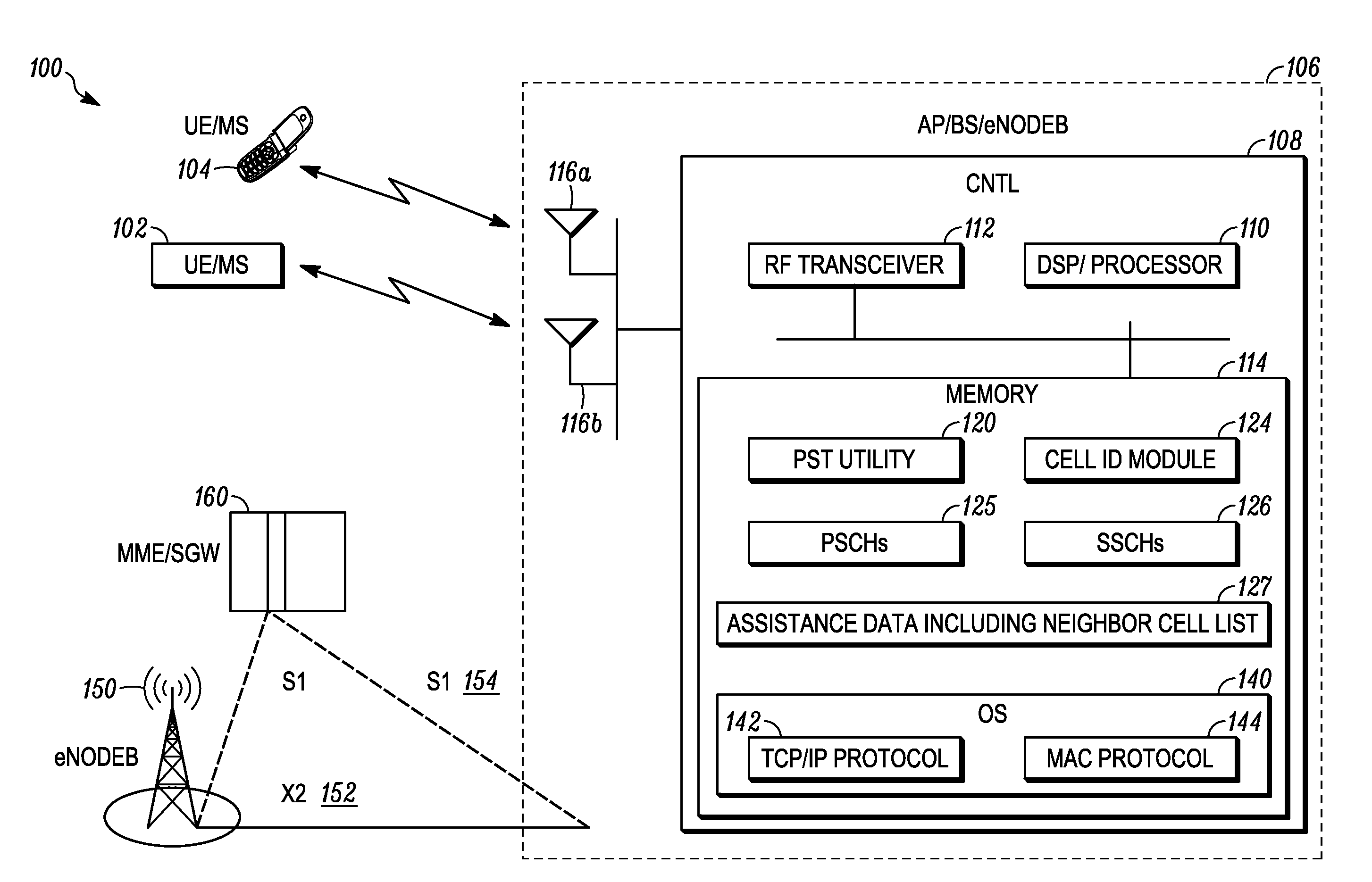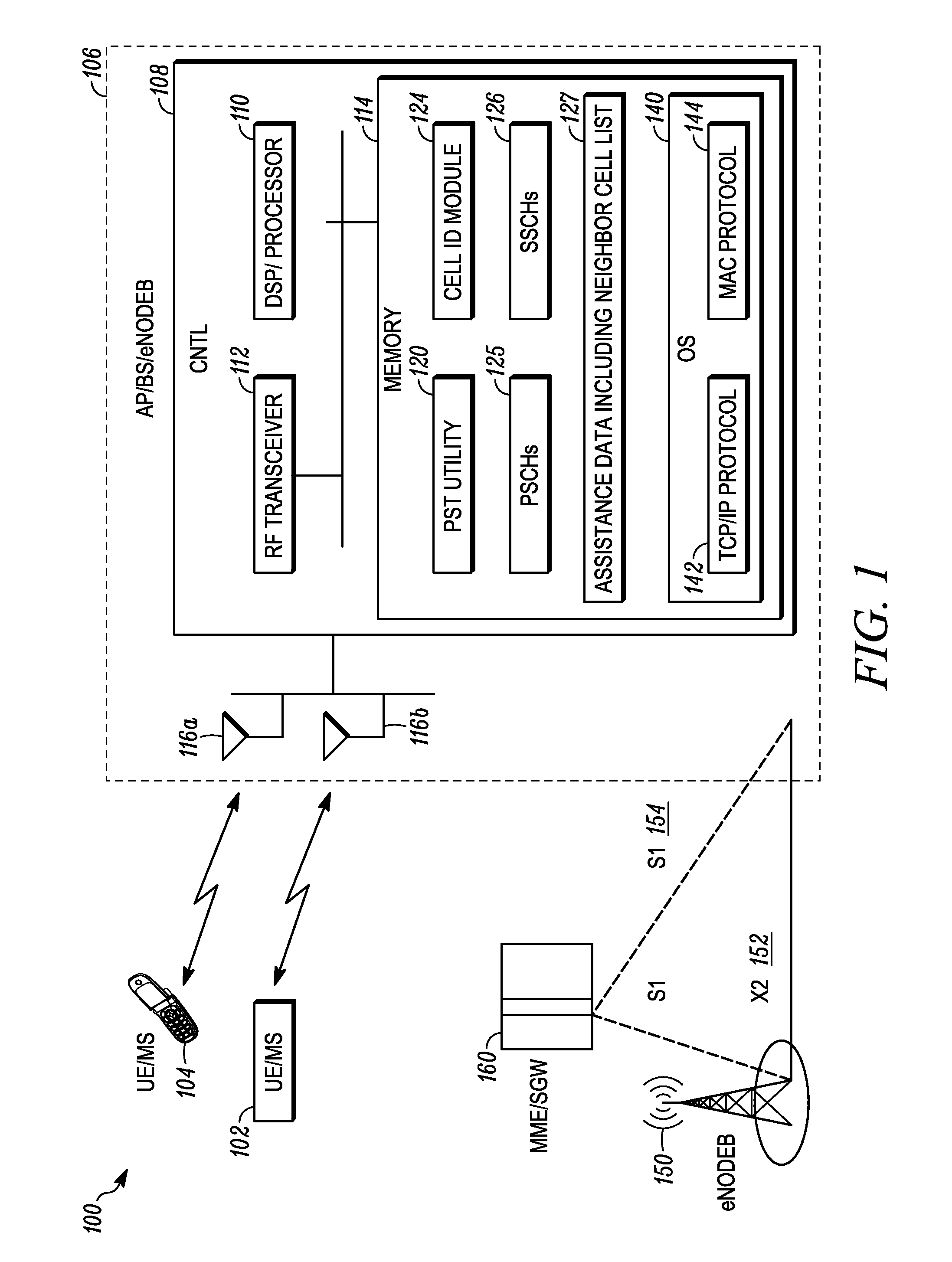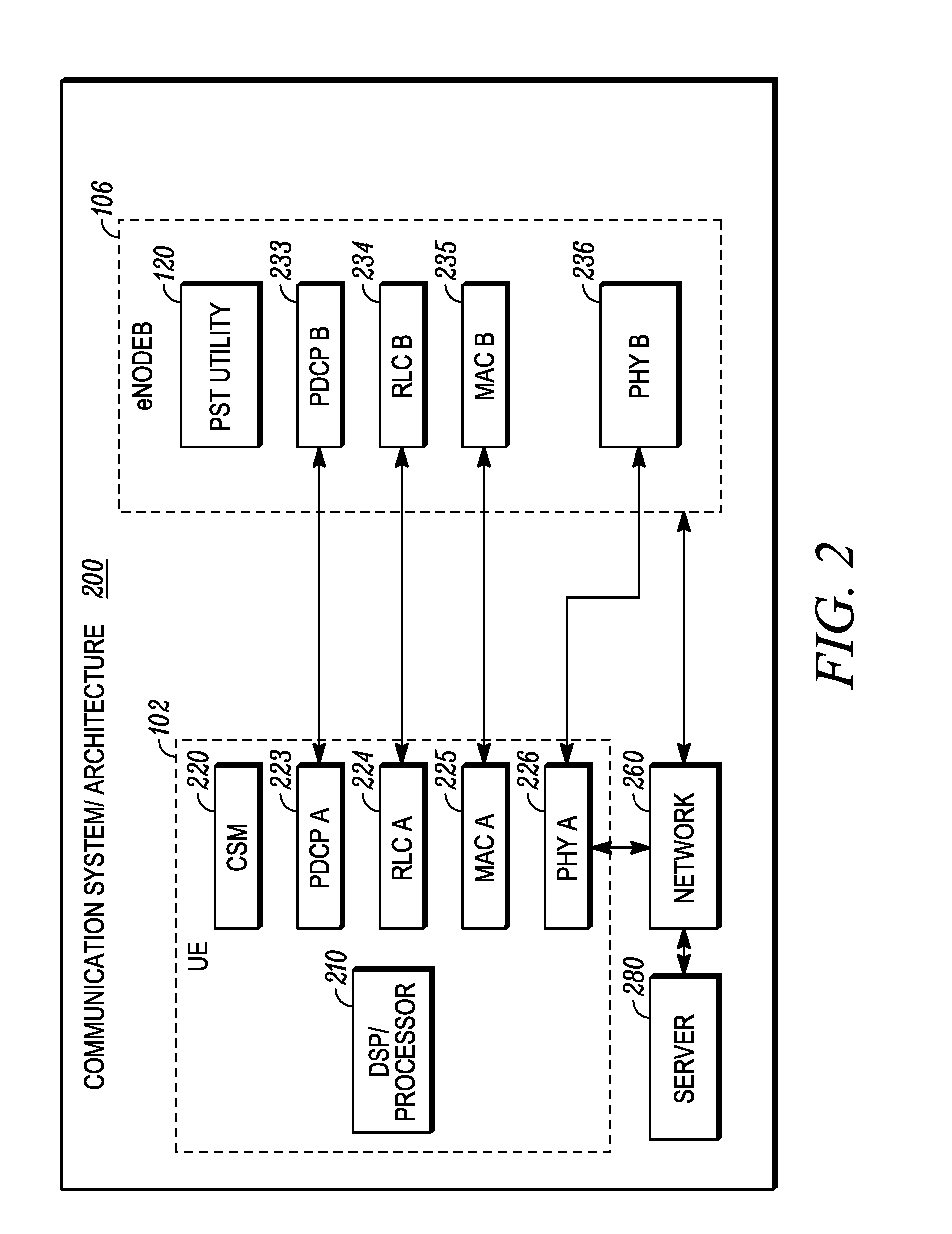Methods for cell search in synchronous interference limited channels
a synchronous interference and cell technology, applied in the field of wireless communication systems, can solve problems such as failure to identify newly detectable neighbor cells
- Summary
- Abstract
- Description
- Claims
- Application Information
AI Technical Summary
Benefits of technology
Problems solved by technology
Method used
Image
Examples
second embodiment
[0018]In one embodiment, the CSM generates a joint estimate of the received power of SSCH sequences corresponding to already detected / identified serving cell and a hypothetical neighbor cell (which has not yet been detected). In a second embodiment, the CSM re-constructs one or both of the PSCH and SSCH sequences for the already detected / identified serving cell and subtracts the reconstructed signal(s) from the received signal. The subtraction operation removes the serving cell PSCH / SSCH transmission from the received signal and therefore mitigates the serving cell interference problem to a large extent. The CSM then proceeds to detect / identify the PSCH and SSCH associated with a hypothetical neighbor cell (which has not been detected yet), as if there was no interference from the serving cell.
third embodiment
[0019]In a third embodiment, the CSM jointly estimates the channel response associated with the known SSCH sequence of the serving cell and the SSCH sequence of a hypothetical neighbor cell (which has not been detected / identified yet). The estimated channel response (h0) for the hypothetical neighbor cell is correlated against a similar channel response (h1) obtained from the hypothetical neighbor cell's PSCH to determine whether the neighbor cell is present.
[0020]In the following detailed description of exemplary embodiments of the invention, specific exemplary embodiments in which the invention may be practiced are described in sufficient detail to enable those skilled in the art to practice the invention, and it is to be understood that other embodiments may be utilized and that logical, architectural, programmatic, mechanical, electrical and other changes may be made without departing from the spirit or scope of the present invention. The following detailed description is, there...
PUM
 Login to View More
Login to View More Abstract
Description
Claims
Application Information
 Login to View More
Login to View More - R&D
- Intellectual Property
- Life Sciences
- Materials
- Tech Scout
- Unparalleled Data Quality
- Higher Quality Content
- 60% Fewer Hallucinations
Browse by: Latest US Patents, China's latest patents, Technical Efficacy Thesaurus, Application Domain, Technology Topic, Popular Technical Reports.
© 2025 PatSnap. All rights reserved.Legal|Privacy policy|Modern Slavery Act Transparency Statement|Sitemap|About US| Contact US: help@patsnap.com



